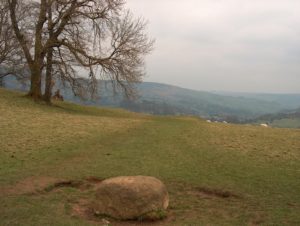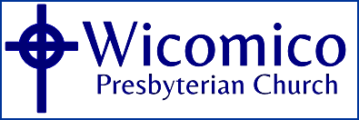
Matthew 21:1-11
On the day that Jesus and his followers came into Jerusalem, it was approaching the Passover celebration. This was and is a time of great celebration for the children of Israel. Most of the Jews didn’t live in Jerusalem – just like most Americans don’t live in New York – but they traveled there for the holiday. Jerusalem was the center of Jewish religious life. The temple made it so; it was the place to offer thanksgiving to God, the place to offer repentance, the place to receive forgiveness.
But Jerusalem was more than that. It was not only a center of religious life, it was a center of political life and even financial life. It was like Washington DC and Manhattan rolled into one – the center of power in the region. It was the time of the Roman occupation; Rome placed its own chosen governor in Jerusalem to look out for the empire’s interests. The Jewish religious authorities – the Chief Priest, the Sadducees, the Scribes and Pharisees, had to work with the governor. They stood in a precarious position between the mighty empire and the people of Israel, striving to placate both sides. But where God was held in that equation seems unclear, to be honest.
For Jesus, though, it wasn’t at all unclear. And for the people he was surrounded by, the farmers and laborers, it wasn’t so unclear. For their lives were simple. They did not play the power games that occupied the rulers of the world. and they had plenty of time to wonder about where and how God was involved in the many hardships of their lives. and I’m sure they did wonder.
Rulers who govern by brutal force know that they always have to be on the lookout for signs of unrest. And there were, indeed, signs of unrest in Jerusalem.
There were agitators. There were protestors. There was talk of getting rid of the oppressors – the empire and their collaborators, the ones who made their lives poorer. Clearly, these agitators were a danger to the empire. These were the kinds of people the rulers wanted to keep a close eye on and, if necessary, get rid of.
Jesus, at times, sounded like these ones – the agitators. He too got angry at the authorities. He too advocated for the poor and the powerless. To the empire and all who worked on the empire’s behalf, Jesus sounded dangerous.
For that reason, he knew that he should stay away from Jerusalem. There was nothing but risk for him if he showed up in Jerusalem at the time of the Passover. He could have stayed away, some urged him to stay away. But instead, Jesus went.
And he took care to set up a particular kind of entrance. He made arrangements ahead of time to get a donkey. Seated on the donkey, he would ride into the city in a procession of palm branches and cloaks spread before him, with a chorus of Hosannas ringing around him. Hosanna – Save us.
For those who understood, and the religious authorities surely understood, he was acting out the words of the prophet Zechariah, who said:
Rejoice greatly, O daughter Zion! Shout aloud, O daughter Jerusalem! Lo, your king comes to you; triumphant and victorious is he, humble and riding on a donkey, on a colt, the foal of a donkey.
On the other side of the city, at the beginning of this week of Passover, there was a different procession. As was the custom, Pontius Pilate, the governor that Rome had installed, was riding in to the city on his war horse, with a battalion of soldiers surrounding him. In case there was trouble during this festival week, the empire would be there in full force – with armor, with weapons, and with all the glory of the empire attached to them – to crush the opposition.
Quite a contrast – between Pilate’s entrance and Jesus’ entrance.
It was a stark and effective contrast Jesus made on that day.
Here is your king! A king who follows in the line of David, a righteous and merciful king. Here is one who is a model of obedience to the law of God.
Here is your king! Riding on a donkey. Showing you a different way.
Sometime later that week, according to John’s gospel, the Chief Priest Caiaphas said, “It is better for one man to die than for the whole nation to perish.” He was right.
+++
During the 17th century the Bubonic plague crept into a small village in northern England called Eyam. It found its way there, apparently, from a bolt of infected cloth sent from London. It had been quite some time since an outbreak of the plague had been seen there, but it was soon clear that this was what they were dealing with.
Then they did an extraordinary thing. Under the leadership of their priest, the people of Eyam made a bold decision to self-quarantine. They shut themselves in and everyone else out. A boundary stone marked the spot where provisions could be left for them and messages could be sent out from them. They rode out the calamity on their own, tending to the sick, burying the dead, their numbers growing thinner by the week.
They made this fateful decision for one reason: to avoid spreading the contagion farther. It was better, they decided, for one village to die – if need be – than for the whole nation to perish.
On the day they made the painful decision to close the church, the writer Geraldine Brooks imagines that the priest reminded them: the church is not a building – a message for us as well. We shall still have church as long as we follow the way of Jesus. We shall still be church wherever and however we gather as the beloved community of God.
The beloved community that surrounded Jesus as he rode into Jerusalem spoke about following “the way” of Jesus. A way that he showed them by his example – a way of humility, of obedience to God, of love for others and a willingness to sacrifice for the sake of the least, the last, the lost.
Jesus went to Jerusalem that day because he was both following and leading the way. The people of Eyam stayed in place because they were following the way. And even, in a way, leading the way for others.
There is still, even today, surely a call for us to follow this way: a way of humility – not taking for granted any wealth or power we have been given, but rather to follow the path of servant leadership; a way of obedience to God’s law, loving God and loving our neighbors as ourselves; a way of care for the beloved community of the least, the last, and the lost.
May you follow the way of Jesus – ever mindful of the need that surrounds you. May you follow him this week – to the temple, to the cross, to the hope that lies beyond death.
_____________________________________________________
Photo: The Boundary Stone between Eyam and Stoney Middleton. The stone was used to pass money and provisions during the plague. By Bill Boaden, CC BY-SA 2.0
